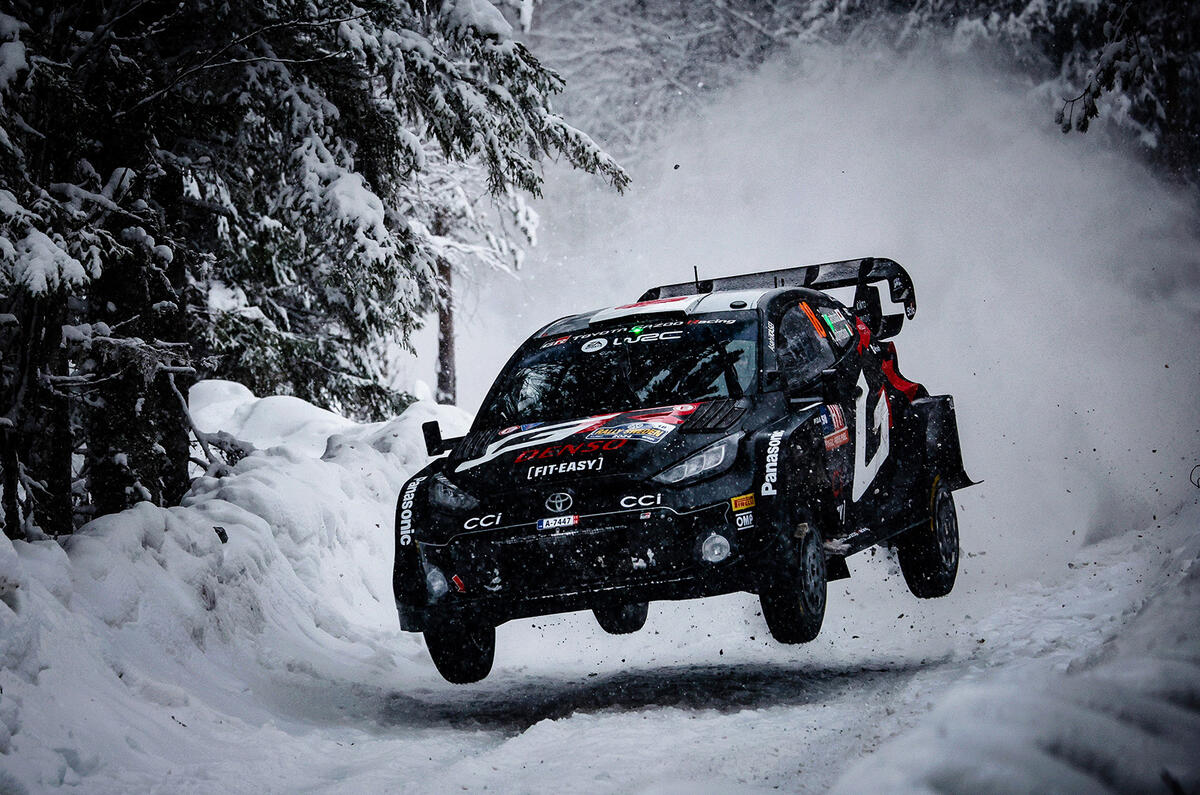The top class of the World Rally Championshp (WRC) is set to undergo sweeping technical changes in the coming years, with hybrid powertrains ditched in 2025 before a new cost-controlled category is introduced in 2026 - with an electric class following “at the earliest opportunity”.
The decision by the FIA, world motorsport’s governing body, to scrap the electrified powertrain elements of the Rally1 cars for next season has been made to reduce cost and performance in an attempt to try and increase the number of competitors in the WRC’s top class.
Currently only Toyota, Hyundai and M-Sport Ford have built cars for the Rally1 division, which was introduced in 2022 to replace the long-running World Rally Car category. There have been concerns about high costs due to the hybrid units, resulting in a failure to attract interest from new manufacturers.
The third-party hybrid powertrain element of the current Rally1 cars produces around 130bhp. The 1.6-litre combustion engines used in the class currently produce 380bhp, but that's set to be trimmed to 330bhp.
Rally1 cars will be allowed to continue running without the hybrid system for the 2025 and 2026 seasons, but from 2026, the FIA plans to introduce revised Rally1 technical regulations for new cars that can run alongside existing ones.
The new category will use a common safety cell, with manufacturers able to add their own bodywork based on production machines including B-segment, C-segment, compact SUV and concept cars.
The FIA said "tight technical criteria", including a set centre of gravity, set aerodynamics, a top-speed restriction and a reference torque curve, will be used to equalise performance.
The cost per car will be capped at €400,000 (£342,000) and manufacturers will be required to make cars available for sale to customers.
Meanwhile, the FIA technical department is working on a set of electric rally car technical rules. The EVs will be based on the Rally1 safety cell, and performance parity with combustion-engined Rally1 cars is targeted.
The decision to reduce the cost of Rally1 cars is likely to find favour with existing teams. Speaking to Autocar recently, before the FIA decision was announced, Toyota WRC team boss Jari-Matti Latvala said: “The costs are too high and the cars are too expensive.
“With the Rally1 cars, we’ve lost the privateers we had with World Rally Cars, because the costs are too high. I think taking the hybrid out and focusing on e-fuels or hydrogen is the way to go to reduce costs.”
From next year, the FIA will also allow privateers in the production-based Rally2 class to add a ‘WRC kit’ to their cars, including a larger restrictor, a larger exhaust, an optional paddle-shift gearbox and a new rear wing. This is designed to reduce the gulf in performance to the Rally1 category.










Add your comment